by Lance Hill | Feb 18, 2024 | How To, Mirliton
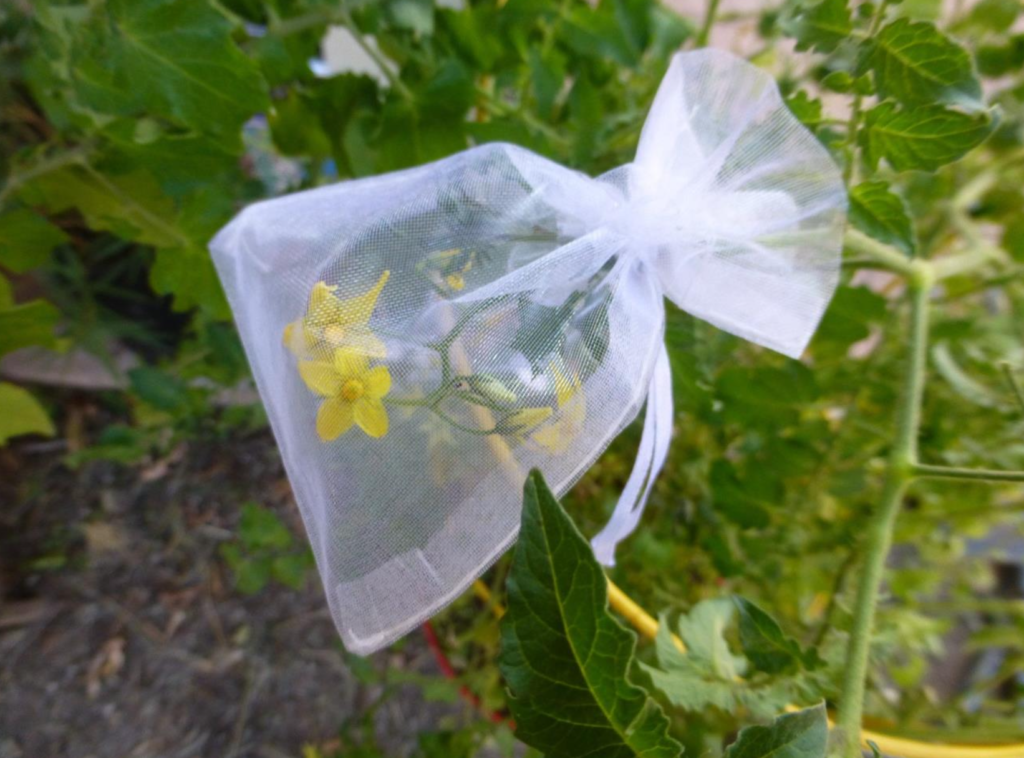
There are no scientific studies on cross-pollination in mirlliton varieties, so we can’t speak with any certainty about the chances of cross-pollination. Mirlitons are self-pollinating plants and are primarily pollinated by bees. Honey bees are systematic foragers; they will focus on one plant until they have collected all the nectar. That means they are less likely to carry pollen from another plant, thus reducing the risk of cross-pollination.
Because of this, generally, you can grow two different varieties with little risk of cross-pollination. If you grow only one variety at a time, you will have even less risk. But if you want to ensure that the offspring of a plant will be true-to-type, there is a simple way to do that: controlled pollination.
Using controlled pollination will guarantee that the specific fruit you picked from your vine will grow the same variety. Click here to see how to do it.
by Lance Hill | Dec 24, 2023 | How To
 Lee Flynn created and manages the Mirliton Seed Online Store, which she does as a volunteer. The store sells only certified Louisiana Heirloom Mirlitons. They are sold at cost, depending on the price that the grower charges (some are donated). Mirlitons are only available in season, and the quantity per order is limited so that everyone can obtain one. If we are out of stock, you will be put on a waiting list and be notified immediately when available. Click here for the store.
Lee Flynn created and manages the Mirliton Seed Online Store, which she does as a volunteer. The store sells only certified Louisiana Heirloom Mirlitons. They are sold at cost, depending on the price that the grower charges (some are donated). Mirlitons are only available in season, and the quantity per order is limited so that everyone can obtain one. If we are out of stock, you will be put on a waiting list and be notified immediately when available. Click here for the store.
Additionally, people advertise heirloom mirlitons when they are in season (Spring and Fall) on our Mirliton.Org Facebook Group.
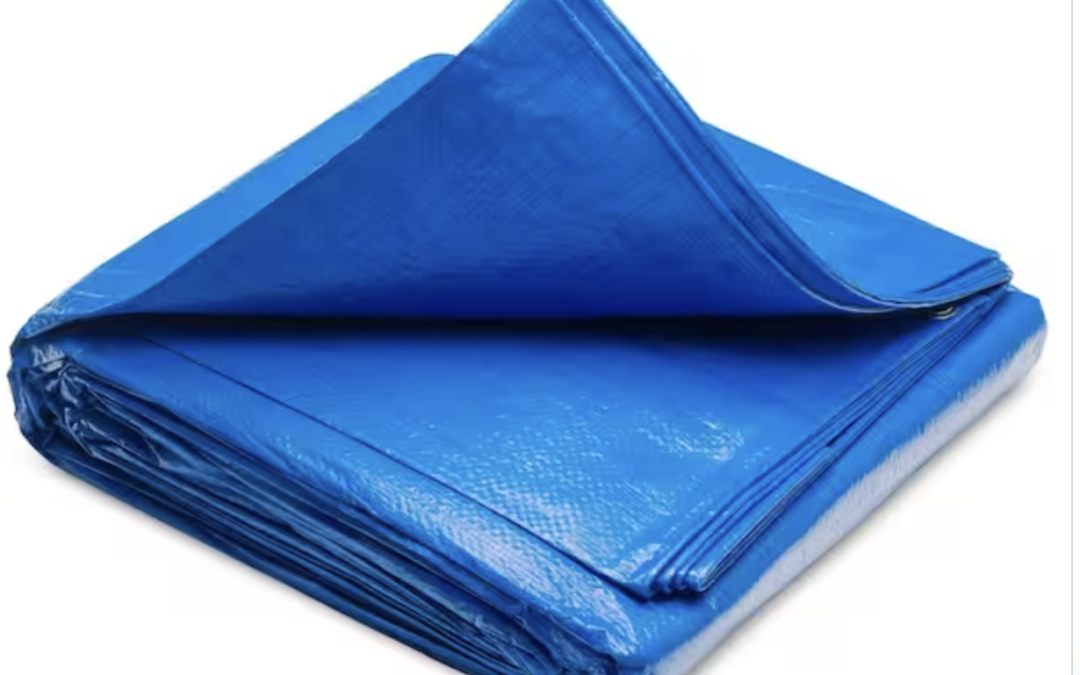
by Lance Hill | Oct 30, 2023 | How To, Mirliton
Frost Protection
There is a possibility of a damaging frost whenever the temperature drops below 38 degrees. You can protect your mirliton with either a minimum or maximum plan.
Minimum plan: Tent the vine the day before with a tarp or 4mil plastic cover. A FEMA tarp will work well. Weight down the edges of the tarp with bricks (you are trying to trap the heat from the soil inside the enclosure). This will raise the temperature a few degrees and may avert the frost.
Maximum plan: Add heat to the tent. You will need an extension cord and a small space heater. A space heater will raise the tent’s internal temperature several degrees, which will protect the vine if temperatures dip to 32 degrees. There are also portable gas heaters. Buy a remote thermometer and place the sending unit in the tent enclosure and you will be able to see exactly what the internal temperature is. Remote thermometers will permit you to see what the temperature is in the tented trellis from the comfort of your home. They are the best defense against a freeze–and cost only
$20. Buy it here.
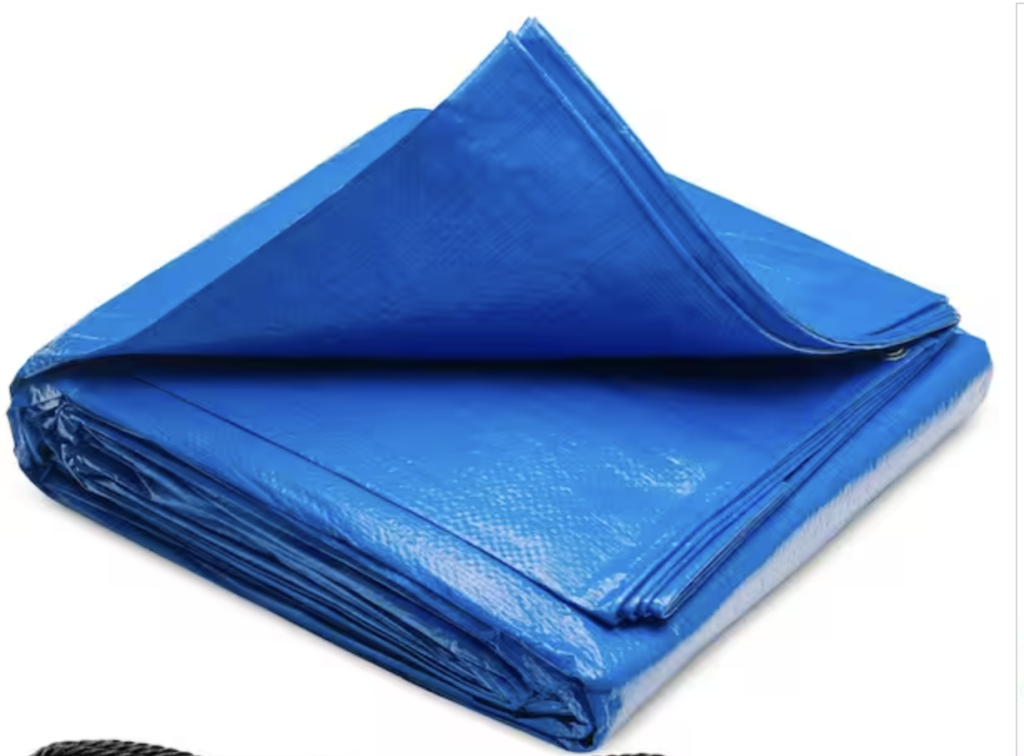
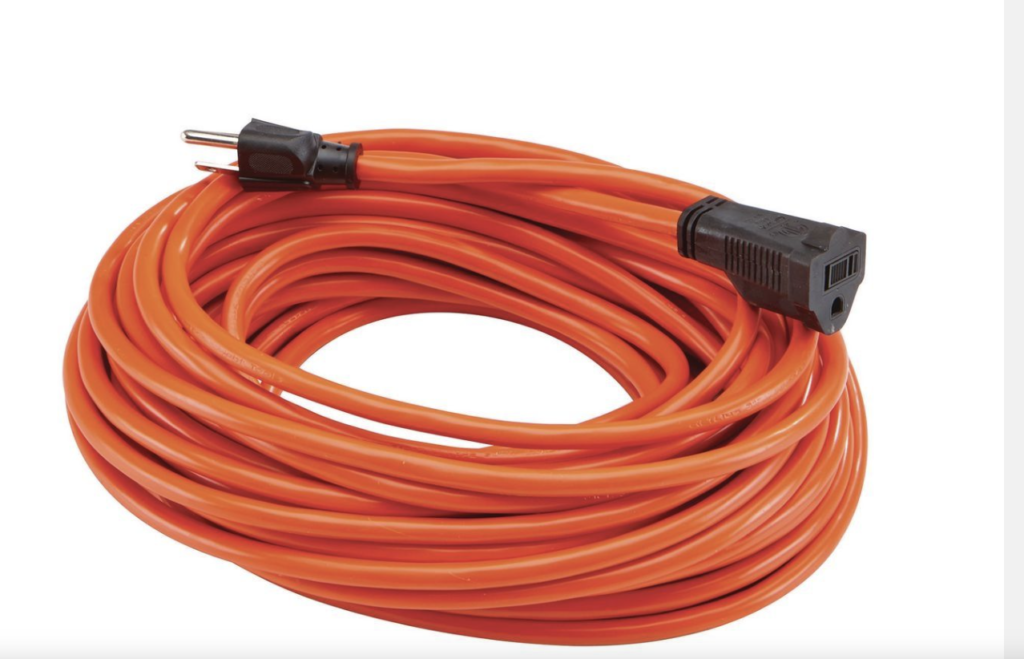


by Lance Hill | Oct 17, 2023 | How To, Mirliton
The Louisiana Mirliton Two-Step
Because of increased extreme weather events like Heat Domes and frequent hurricanes, we need to think entirely differently about when and how to grow mirlitons. We have two chances at a mirliton crop: Spring and Fall. We need to especially take advantage of our cool months, October through May.
Step One
Plant your mirliton seed or container plant in the fall and build a trellis for the vine to grow on all winter. When necessary, temporarily cover it with 4-mil plastic and warm it with a portable heater to protect it on frost/freeze days. By the following spring, the vine will have a large canopy to support flowering–and you will get a spring crop.
Step Two
To help your vine get through the summer, use the same trellis to support a 30% shade cloth to shade the vine from June through August, if necessary. That will give you a a good chance at another crop in the Fall
10’ X 25’ 4-mil plastic sheets
Space Heater
Shade Cloth
Remote Thermometer for Enclosure
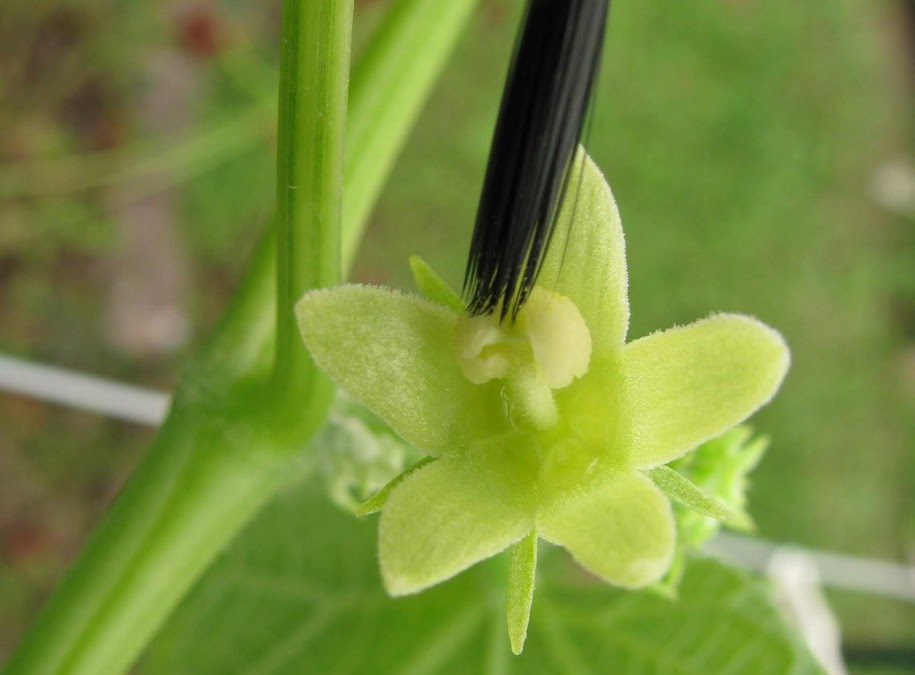
by Lance Hill | Apr 30, 2023 | How To, Mirliton
Sometimes bees and other pollinators are not doing their job and you want to ensure that your female flowers are pollinated. The simplest way is to hand pollinate with a slender artist’s brush with dark bristles. The bristles make it clear that you have collected yellow pollen from the males. Using a brush means you do not destroy the males and can return to them for additional pollen. Click on each photo in this link to read the instructions: https://www.mirliton.org/photo/hand-pollinating-of-mirlitons/
by Lance Hill | Apr 23, 2023 | How To
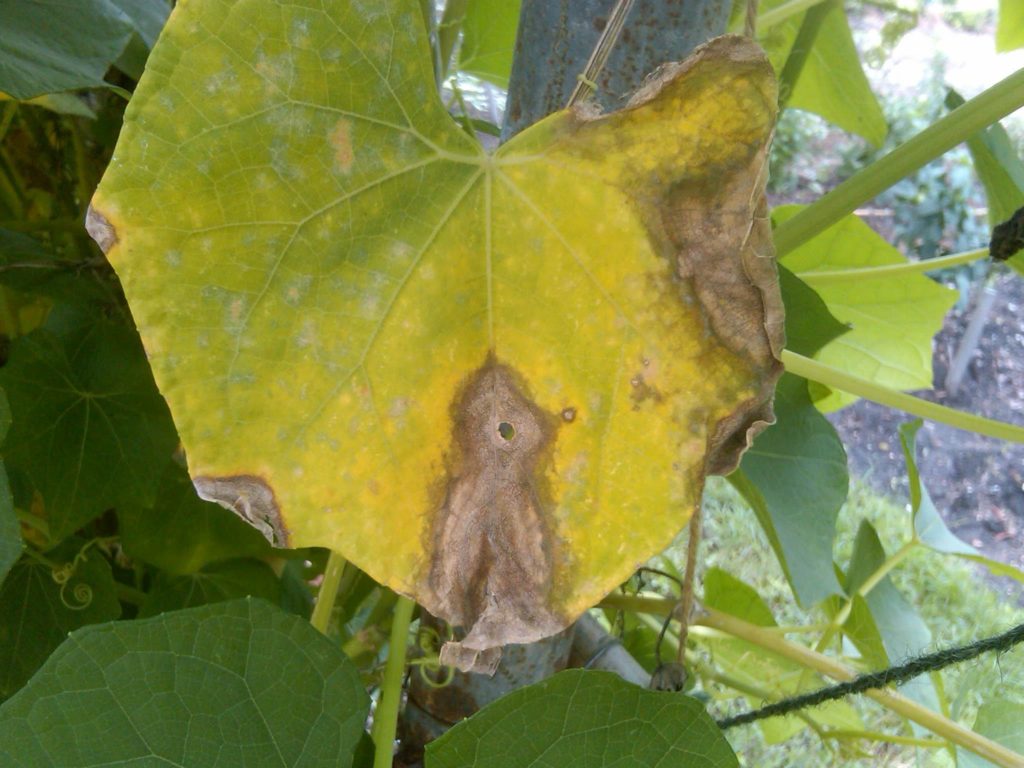
Mirliton leaf infected with anthracnose. Unlike powdery mildew which yellows uniformly and wilts the leaves, anthracnose starts as yellow wedges between the leaf veins. It then turns the leaf tissue brown and leaves with a distinctive “shot hole.”
Anthracnose is a summer disease caused by many fungi, but the pathogen that affects mirlitons is Colletotrichum lagenarium. For the purposes of this article, I will call Colletotrichum lagenarium the “anthracnose fungus. It is a chronic problem with mirlitons and it’s the main reason plants die the first year. There is no known synthetic or biological fungicide that can prevent or eradicate anthracnose in mirlitons. But anthracnose is like a sprained ankle; you can’t prevent it or take a pill to cure it, but you can minimize the risk of getting it and speed up the healing process.
Anthracnose and powdery mildew (PM) are fungal diseases that start with a common sign; leaf yellowing (chlorosis). It’s important to recognize the difference because powdery mildew can be treated, while anthracnose can’t. The PM fungus spreads on the surface of leaves, initially as faded yellow dots and then yellowing the whole leaf until it wilts and dies. Anthracnose, in contrast, grows inside the leaf cells and spreads cell-to-cell (intercellularly)l, so it tends to spread between the leaf veins and form sharp wedges. It kills the tissue within the wedge spreading across to the whole leaf, so you will see both yellow and brown tissue in the same wedge photo.
Mirlitons tend to experience anthracnose epidemics in July and August because of rain patterns. Intensive rains splash up anthracnose fungi from the ground onto the plant stem. The fungus incubates during warm nights and produces thousands of spores that are contained in a sticky base. Rainstorms dissolve the sticky film which releases the spores. Then, raindrops splash the spores to adjacent leaves–and that’s why anthracnose epidemics occur during the hot rainy season.
Anthracnose infects every part of the vine, including leaves, petioles, and stems. It will eventually split the stem, preventing the flow of nutrients to the ends of the stem, so suddenly a whole section of the vine will wilt and die. The good news is that for every stem lost, a healthy vine will send up a new shoot. It is a tug-of-war with the disease through the summer, but generally, the disease will disappear by September in time for flowering and fruiting.
The key to surviving an anthracnose epidemic is to have a healthy vine in place before the epidemic. That means a well-drained and aerated vine. When the soil is water-saturated and no oxygen is available in the root zone, plants go through dramatic changes to survive. They are literally in “anoxic” soil like the dead zones in the Gulf of Mexico. They shift from aerobic metabolism to anaerobic metabolism: they have only 5% of the energy efficiency they have in healthy aerated soil; they produce toxic organic and inorganic compounds, and they deprive leaves of potassium crucial to maintaining leaf functions. After 24-48 hours, the roots have been damaged making it more difficult for them to uptake water and nutrients. Leaf functions are weakened and the whole plant is vulnerable to disease.
The good news is that a mirliton will acquire increased resistance to anthracnose every time it gets the disease. If your vine gets anthracnose this year, it is less likely to get it next year.
The solutions are simple.
Ground Planting:
Make sure the soil is well-drained and aerated. Plant on your highest area available, use planting hills, and stay away from roofs. Plant near a tree if you have one; trees are natural sponges and tend to stabilize soil moisture. If you already have the vine planted, you can dig shallow drainage trenches to remove excess rainfall away from the vine or add a corrugated drain pipe or a French drain.
Raised-bed Planting:
Remember that a raised bed can’t drain into a saturated yard, so you need to construct a bed that will permit excess rainfall to escape the bed via the sides. Add a lateral route for excess water to exit above ground level by drilling 1/4 “ holes along the side panels.
Summary:
For now, the best protection against anthracnose is (1) to use only locally grown heirloom mirlitons for seed since they are likely to have some resistance to anthracnose; (2) plant in well-drained, aerated sites; (3) provide plenty of trellis space so leaves on top can spread out and get maximum exposure to the sun (a natural fungicide) and air circulation; (4) minimize leaf/soil contact by using an overhead horizontal trellis at least 4 feet above the soil and (5) always irrigate gently with a hose set on low on the surface or drip irrigation to prevent splash-up of soil-borne fungi. Do not water mirlitons from the top down. Once leaves and stems are brown and dead, remove them and dispose of them away from the vine.
Click here to see photos of anthracnose infection signs on leaves and stem at different stages (click on each photo for descriptions)
Click here for how to identify and manage powdery mildew.

 Lee Flynn created and manages the Mirliton Seed Online Store, which she does as a volunteer. The store sells only certified Louisiana Heirloom Mirlitons. They are sold at cost, depending on the price that the grower charges (some are donated). Mirlitons are only available in season, and the quantity per order is limited so that everyone can obtain one. If we are out of stock, you will be put on a waiting list and be notified immediately when available. Click
Lee Flynn created and manages the Mirliton Seed Online Store, which she does as a volunteer. The store sells only certified Louisiana Heirloom Mirlitons. They are sold at cost, depending on the price that the grower charges (some are donated). Mirlitons are only available in season, and the quantity per order is limited so that everyone can obtain one. If we are out of stock, you will be put on a waiting list and be notified immediately when available. Click






Recent Comments